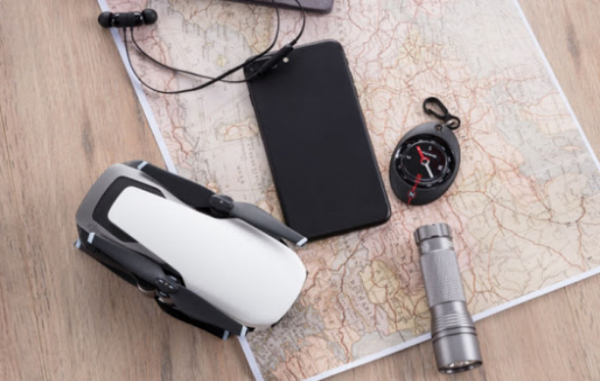Flying a drone for the first time? Here are 15 tips & tricks for beginners

Congratulations on the purchase of your new drone. Trust me, you won’t look back! So now that you have this highly technical piece of equipment, what next? Since entering into the DJI family, I have learned a few things along the way, to make the flight experience smooth and enjoyable. So... here it is.
1. Do not fly with partial battery!
Make sure you top up the battery the morning of your planned flight. If you plug in the charger and the lights do not come on, unplug the charger, turn the battery on, then plug the charger back in. This will charge the battery the last bit of depleted battery to full.
2. Make sure your battery is secure
When you put the battery into the battery terminal, make sure it snaps in and clicks secure. You do not want the battery falling out mid flight - disaster!
3. Hand tighten props until they fit snug
Always turn the props a touch more to give that ‘secure’ feeling. You’ll know when you’ve done it right (tip for the Phantom 3 series drone users).
4. IMU calibration
If you have to do an IMU calibration, it has to be done on a completely level surface. Use a level to make sure it's perfect. Immediately after the IMU is calibrated, make sure you conduct a glimbal calibration. Always do an IMU calibration after firmware (subjective to some people but I say do it).
5. Fixing crooked horizons
If your horizon is crooked when looking through your monitor, hold down the button under the controller with your right middle finger whilst spinning the above dial with right index finger to correct tilt whilst flying.
6. GPS Signal
Always wait for the GPS signal to be connected on your monitor screen before take off. GPS signal is a fail safe option and will assist in your drone returning to you if you lose signal. If you don’t have GPS signal and lose connection to the drone, it may not come back!
7. Auto take off and landing
Avoid using auto take off and landing. Why? Because auto take off and landing can’t be controlled with your own hands. Practice manually taking off and landing - The more control you have over your drone the better! I suggest only using auto take off and landing when you have to.
8. Set your Return to Home
Set your return to home (RTH) mode to RTH and the height appropriate to the highest object you are flying near before flying in a new area.
9. Warming of the motors
Let motors warm for 15-20 seconds before takeoff to make sure everything is running smoothly and as it should be.
10. Don’t fly behind objects
The drone will try to come straight back when it loses signal. If there’s an object in the way, it may crash into it.
11. Tight spaces
Avoid flying through tight spaces in GPS mode. The drone may lose signal and become distorted, flying into something and crashing.
12. Plastic film
Remember to remove the clear plastic film over the camera’s lens prior to your first flight.
13. Plastic housing
Make sure you remove the plastic housing holding the camera in place before powering on your drone. If you don’t, it can cause the gimbal to overload and cause permanent damage.
14. Plastic clips
For the Phantom 3 series drones, yes, there is only supposed to be two plastic clips, not four holding the gimbal on. They are designed this way!
15. Create a DJI account
Remember to create a DJI account in the DJI GO application to sync your flight records. Sync with the cloud after each flight. You may need them some day to find your drone if it gets lost. Also, the DJI App writes separate low resolution video to your iPad or other monitor when recording on the drone. Keep this turned on and delete from the iPad when it gets to be too much. Again you may need this video to find the bird.
I hope these tips and tricks help you as they helped me. Now get out there and fly!
Out Droning is a world renowned drone photographer based in Sydney, Australia. You can check out his work at www.instagram.com/out_droning
Leave a comment
Comments will be approved before showing up.






Out Droning
Author